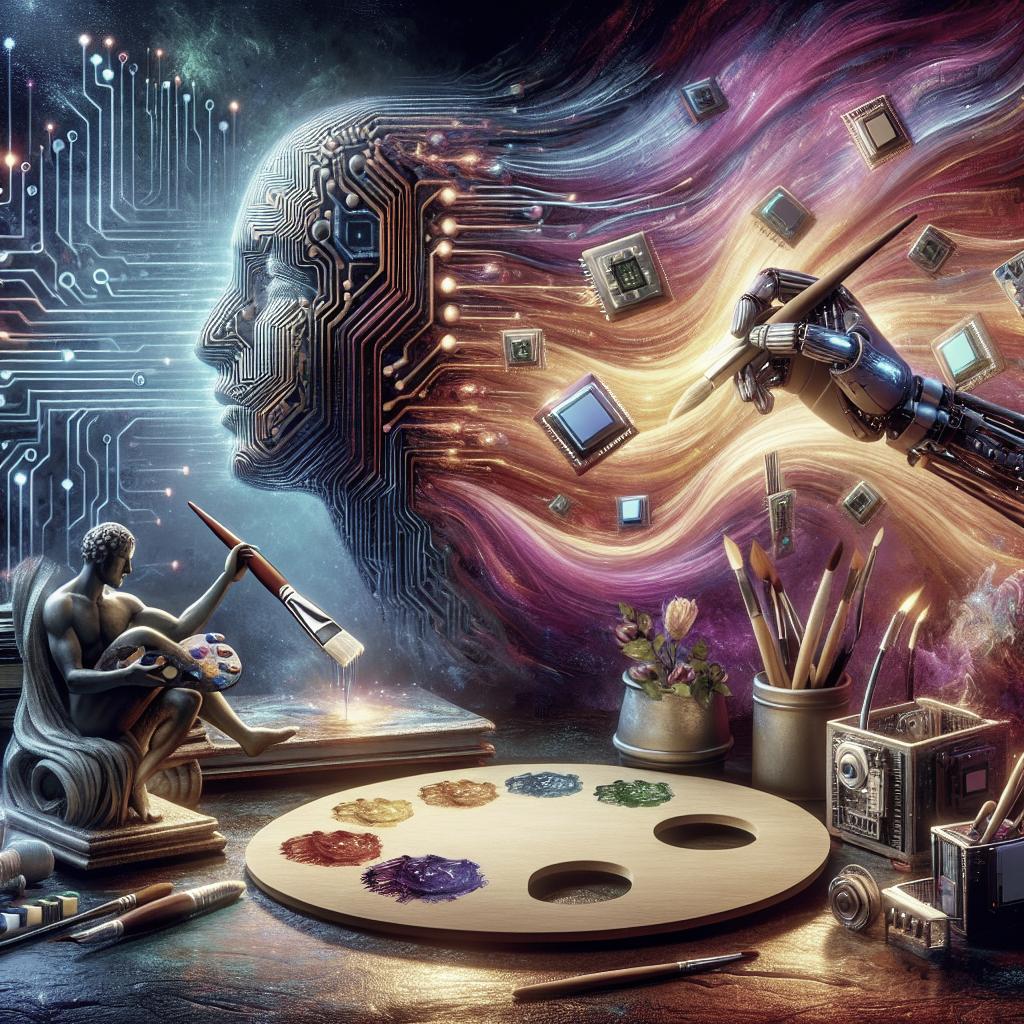“`html
How AI is Changing the Landscape of Creative Arts
Artificial Intelligence (AI) is revolutionizing numerous industries, and the realm of creative arts is no exception. From assisting artists in creating innovative works to making art more accessible to diverse audiences, AI is reshaping the ways we create, interact with, and appreciate art. This blog post explores how AI acts as a creative collaborator, enhances artistic processes, democratizes art, and the ethical and social implications of these advancements. We will also examine the future outlook of AI in the arts, providing a holistic understanding of this pivotal transformation.
AI as a Creative Collaborator
AI has emerged as a valuable ally for artists, offering new possibilities for creative expression. With the development of AI-driven tools like generative adversarial networks (GANs), artists can now push the boundaries of traditional art forms, generating unique works that blend human creativity with machine precision. These tools allow artists to experiment with styles and techniques they might not have previously considered, expanding the scope of their creative output.
Moreover, AI is not just a passive tool; it often operates as an interactive partner. Programs like DeepArt and Google’s DeepDream utilize AI algorithms to transform existing images into novel, dreamlike visions, encouraging artists to explore unfamiliar territories. Such collaboration fosters a dynamic dialogue between the artist and the machine, resulting in creations that highlight the fusion of human intuition and machine learning capabilities.
Enhancing Creative Processes
The integration of AI in creative workflows has sparked significant improvements in efficiency and innovation. Creative professionals can now automate repetitive tasks, freeing up time to focus on ideation and refinement. Tools like Adobe’s Sensei harness AI to simplify processes within design software, enabling users to achieve complex results effortlessly. By automating mundane tasks, artists can dedicate more time to conceptualizing and elevating their work.
In addition to streamlining workflows, AI can aid in idea generation by analyzing vast datasets and uncovering patterns that inspire art development. AI-driven platforms, such as RunwayML, allow artists to prototype ideas quickly and visualize concepts nearly instantaneously. By harnessing machine learning, artists and creative teams can iterate rapidly, leading to more experimental and innovative outcomes in their projects.
Democratizing Access to Art
AI’s ability to democratize art is another transformative aspect. By lowering the barriers to artistic creation, AI tools enable individuals without formal training to express themselves creatively. Platforms like Artbreeder allow users to combine existing images to create new artworks, empowering those outside traditional art circles to participate in the creation process. This inclusivity fosters a diverse community of creators, enriching the cultural tapestry with varied perspectives.
Moreover, AI is making art more accessible to audiences around the world. Virtual reality (VR) and augmented reality (AR) technologies, powered by AI, enable immersive experiences of art exhibits and museums, breaking geographical and financial constraints. These innovations ensure art is not confined to physical spaces, allowing diverse audiences to experience and engage with works of art in novel ways, fostering a global appreciation for different cultural heritages.
Ethical and Social Implications
While AI opens up new horizons for creativity, it also poses ethical and social challenges. The rise of AI in the arts prompts discussions about authorship and originality, as creations involve both human and machine input. Determining the rightful creator of an AI-assisted artwork can complicate intellectual property rights, requiring new frameworks to address these emerging issues.
The potential for AI to emulate certain styles or artists also raises concerns about cultural appropriation and the commodification of art. As AI systems are trained on existing works, they risk perpetuating biases or reinforcing stereotypes. The responsibility to ensure ethical use of AI technologies in art falls on both developers and stakeholders to maintain cultural sensitivity and promote inclusivity.
The Future Outlook
The future of AI in the creative arts appears both promising and complex. As cultural and technological landscapes continue to evolve, AI is likely to become even more integrated into artistic practices. Advances in machine learning and computational creativity may result in more sophisticated AI tools that push the boundaries of what we consider art. Artists might adopt roles as curators of machine creativity, guiding AI’s capabilities to express deeply human emotions and narratives.
As AI takes on a more significant role in art, interdisciplinary collaboration becomes crucial. Artists, technologists, ethicists, and policymakers need to work together to navigate the ethical and legal challenges posed by AI. By fostering an inclusive dialogue, stakeholders can ensure a future where AI enriches the creative arts while respecting cultural legacies and diversifying artistic expressions.
Final Thoughts
| Aspect | Summary |
|---|---|
| AI as a Creative Collaborator | AI assists artists in expanding creative boundaries and acts as an interactive partner to inspire new forms of art. |
| Enhancing Creative Processes | AI improves efficiency by automating tasks and aids idea generation, allowing for more experimentation and innovation. |
| Democratizing Access to Art | AI tools democratize creation, allowing broader audiences to participate and experience art without traditional barriers. |
| Ethical and Social Implications | AI raises ethical questions on authorship, cultural appropriation, and the preservation of diverse artistic traditions. |
| The Future Outlook | AI’s future in arts involves deeper integration, necessitating cross-disciplinary collaboration to tackle emerging ethical challenges. |
“`


